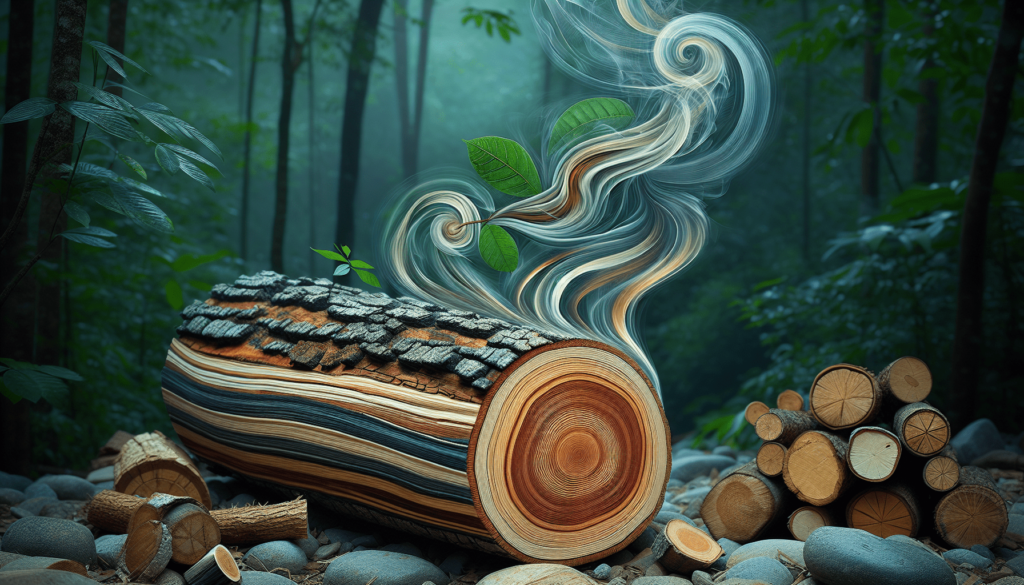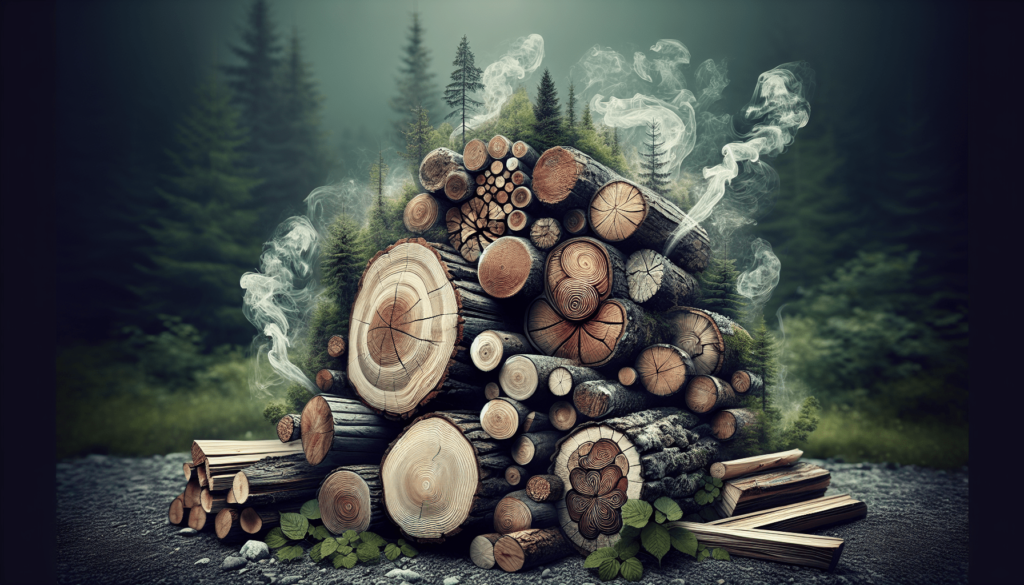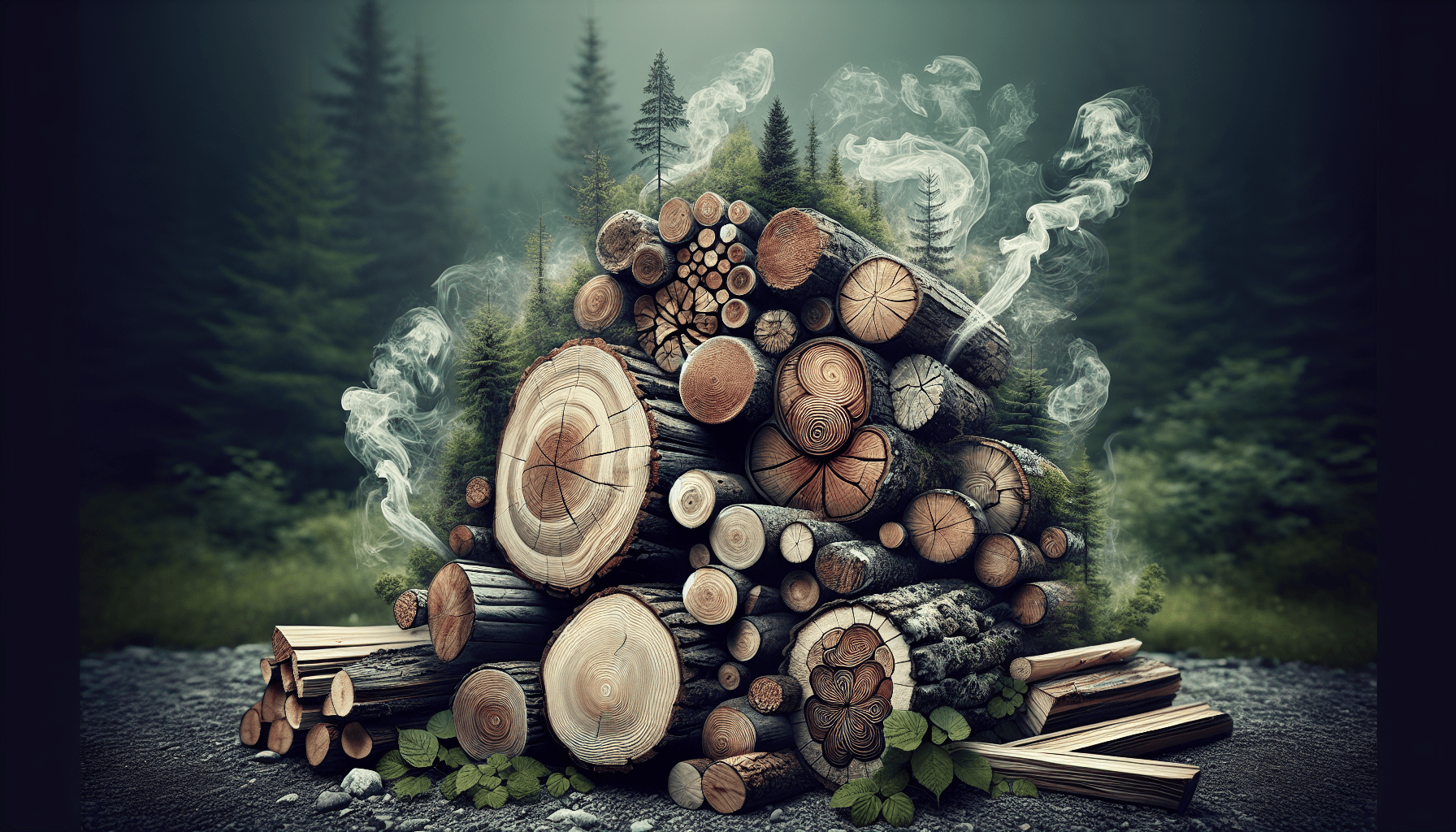There’s something deeply comforting about a crackling fire on a chilly night, but not all wood is created equal when it comes to burning. My article, “Is It OK To Burn Any Wood?” delves into the nuances of different types of wood, exploring which ones are safe to burn and why. From the dangers of treated wood and its toxic fumes to the benefits of seasoned hardwood, I break down what you need to know to enjoy your fireplace safely and responsibly. Is it OK to burn any wood?
You might ask, “Is it OK to burn any wood?” Well, that depends on a few factors. Let me break it down for you in a way that’ll clear things up and maybe, just maybe, entertain you in the process. Think of this as a cozy fireside chat, perhaps not unlike the kind you might have if David Sedaris were sitting across from you, warming his hands by the hearth.
What Kind of Wood Are We Talking About?
When considering whether it’s OK to burn a piece of wood, the first question you should ask is, “What kind of wood is it?” Not all wood is created equal when it comes to burning. In fact, there are several factors that make some woods better suited for burning than others.
Hardwoods vs. Softwoods
To begin with, let’s discuss the basic types of wood: hardwoods and softwoods. If these terms make you think of a cheesy furniture commercial, you’re not far off, but stick with me here.
Hardwoods are generally denser and burn longer and hotter. Think oak, maple, and cherry. These are the woods you want for a lasting fire that will keep you warm through those Netflix marathons.
Softwoods, like pine, spruce, and fir, come up short in the burning department. They burn quickly and don’t produce long-lasting coals. Oh, and they’ve got a sticky reputation because of their resin content, which can cause a fireworks show you didn’t ask for in your chimney.
Here’s a quick comparison for your convenience:
| Type of Wood | Examples | Burning Properties |
|---|---|---|
| Hardwoods | Oak, Maple, Cherry | Long, hot burn, good for heating |
| Softwoods | Pine, Spruce, Fir | Quick burn, less heat, resinous |
Fresh or Seasoned?
So, you’ve identified the type of wood you’re dealing with. Great! But wait, there’s more to consider. Is the wood fresh or seasoned? No, we’re not talking about wood with a dash of oregano and thyme.
Fresh Wood
Freshly cut wood, often called “green wood,” has a high moisture content. Imagine trying to light a wet sponge on fire; that’s what it’s like burning green wood. It produces a lot of smoke and burns inefficiently. Plus, high moisture content can contribute to the buildup of creosote in your chimney—a word that sounds like a cousin to cement and is just as hard to deal with.
Seasoned Wood
Seasoned wood has been left to dry out, usually for six months to a year, reducing its moisture content to a more fire-friendly level. This makes it much easier to burn and much more efficient.
| Wood Condition | Characteristics | Burning Properties |
|---|---|---|
| Fresh (Green) | High moisture | Smoky, inefficient burn |
| Seasoned | Low moisture | Clean, efficient burn |

How Was the Wood Treated?
If you’ve got your type and dryness status sorted out, the next stop on our wood-burning journey is treatment. Cue the ominous music, because treated wood is a no-go.
Chemically Treated Wood
Wood that has been treated with chemicals, like pressure-treated lumber commonly used for decks, should not, under any circumstances, be burned. Who wants to breathe in arsenic, chromium, and other delightful toxicants? Exactly, no one.
Painted or Varnished Wood
Then there’s painted or varnished wood. It might look pretty, but burning it releases all sorts of nasty fumes. Think twice before you chuck that old painted chair leg into the fireplace.
| Type of Treatment | Health Hazards |
|---|---|
| Chemically treated (e.g., pressure-treated) | Toxic fumes (arsenic, chromium) |
| Painted or varnished | Harmful vapors (lead, VOCs) |
Unique Types of Wood: Pallets, Driftwood, and More
Not all wood comes from the forest. Sometimes you get creative with your wood sources. I’ve seen people pick up pallets left out by the dumpster behind a local supermarket. But should you burn these?
Pallet Wood
Sure, pallets seem like a convenient wood source, but be careful. Some pallets are treated with chemicals to make them more durable for shipping purposes. If you’re unsure about their origin, it’s best to avoid them.
Driftwood
Driftwood, picked up from your latest beach excursion, might make for great décor, but burning it is a bad idea. The salt content in driftwood can corrode your stove or chimney lining. Not to mention, it can produce toxic fumes.
Scraps and Construction Wood
And then there’s construction scrap wood. All those offcuts and discards from building projects might be tempting to toss into the fire, but remember, treated and painted wood often find their way into these piles.

Wood Burning Appliances
Let’s pivot for a second to talk about the appliances you might be using to burn this wood. Not all wood-burning appliances are built the same, and some are better suited for certain types of wood than others.
Fireplaces
Ah, the classic fireplace. Great for hardwoods. If you’ve got a fancy, open-hearth fireplace with its artisanal charm, you’ll want to stick with seasoned hardwoods to make the most of it.
Wood Stoves
Wood stoves, my personal favorite because of their efficiency, benefit from both good hardwood and seasoned softwood. But beware: poor-quality wood can gunk up the works.
Outdoor Fire Pits
Outdoor fire pits are less picky, but if you want to avoid smoking out your neighbors, good wood matters. Stick with clean, seasoned wood to keep things pleasant.
Environmental Concerns
Let’s get a bit green for a moment—no, not like the fresh wood green, the eco-friendly kind. There’s a growing awareness that burning wood isn’t always great for the environment.
Air Quality
Burning wood releases particulate matter and potentially harmful gasses. This can contribute to air pollution and has adverse health effects. It’s one reason why some areas have restrictions or bans on wood burning.
Sustainable Sourcing
If you’re committed to burning wood, aim to source it sustainably. This means looking for wood that has been harvested in a way that supports the renewal of forest ecosystems.
How to Store Wood Properly
Storage is more critical than you’d think. Poor storage can turn even the most well-seasoned wood back into something less desirable.
Air Circulation
Your wood needs to breathe—sort of. Store your wood in a spot with good air circulation to keep it dry. Avoid stacking it directly on the ground; instead, use a pallet or some other form of elevation.
Covering
While you want to protect your stash from downpours, don’t wrap it up like a Christmas gift. A loose cover that keeps off rain but allows for airflow is ideal.
Location, Location, Location
Store your wood close enough to the house for convenience but not so close you invite termites and other critters to set up shop.
Safety First
Chimney Maintenance
I can’t stress this enough—keeping your chimney clean and well-maintained is crucial. A buildup of creosote can lead to chimney fires, the kind Smokey the Bear should warn you about.
Fire Extinguisher
Always keep a fire extinguisher within reach. It’s one of those “better safe than sorry” pieces of advice you’ll thank me for later.
Smart Fire Starting
Using paper, kindling, and smaller logs to start your fire helps get the larger pieces burning more effectively. Avoid accelerants like lighter fluid which can cause unmanageable flare-ups.
The Cultural and Historical Context
There’s something deeply primal and universally comforting about a wood fire. Cultures around the world have relied on wood as a primary source of heat and cooking fuel for centuries.
Indigenous Practices
Indigenous communities have long understood the nuances of wood burning. They know which woods to burn for different activities, from cooking to ceremonial fires.
Pioneering Days
Think Laura Ingalls Wilder or any of those rugged pioneer stories. Wood burning was a cornerstone of daily life. Learning from these practices can actually inform safer, more effective ways to burn wood today.
Wrapping it Up
So, is it OK to burn any wood? The nuanced answer is no. The more detailed answer includes considerations about the type of wood, its condition, how it was treated, and the appliance you’ll use. Throw in environmental factors and safety precautions, and you’ve got a solid primer on responsible wood burning.
When it comes down to it, being choosy about your firewood isn’t just good for your fireplace or stove; it’s better for your health and the environment. So, go ahead, enjoy that crackling fire—but make sure you do it right. And if David Sedaris happens to join you, I hope he brings some of his stories along.

